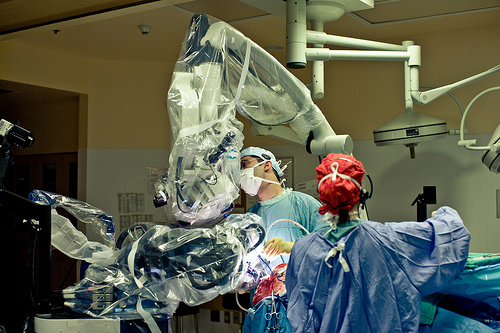NeuroArm: a Robot Brain Surgeon

Brain surgery can have an immeasurable effect on a patient’s life. Just ask my friend Jean. His epilepsy is gone since such an operation, and his life has changed for the best. Obviously, such operations are risky. The recent announcement of the NeuroArm promises more accurate and safer brain surgeries. The impact on human lives is impressive: so is the technology behind this ambidextrous robot.
Inside a magnetic resonance imagery (MRI) machine
The idea driving the NeuroArmis is to be able to work inside an MRI machine. We can “see” inside a human body using these machines. Seeing inside a brain in real-time during an operation is a major advance in neurosurgery.
As its name indicates, the MRI uses a magnetic field to image the body. This provides significant technical challenges to roboticists. They must avoid all sensors and activators that generate magnetic fields. In addition, they must select materials that will not interfere with the magnetic field. This is why the NeuroArm is made mainly of titanium and PEEK, a plastic composite.
The surgeon’s immersion
In addition to receiving 3D imaging from the MRI, the stereoscopic cameras film the instruments in action. Everything is projected in stereo in the surgeon’s eyewear.
The doctor works two levers controlling the robotic instruments. They look like modified Phantoms. They provide tactile feedback so that the doctor feels like he is working on human tissue using real instruments. The user’s vibrations are filtered out, making the tools perfectly steady and making operations at the 50-micron precision level of individual cells possible. The best surgeons used to be able to operate at no less than 1-2 mm (1000-2000 microns).
The Canadarm in your head
Calgary University researchers carried out the project.Financing came from petroleum industry philanthropists at first, then from various provincial and federal research funds. Canadarm builder, MDA, built the robot. In space robotics as in medical robotics, safety and reliability are reaching incredible levels. Lives are at stake here. MDA was therefore able to transfer its experience from space to medicine. When you see the NeuroArm, you’d think it was the little landlubber brother of Dextre, who will be installed on the arm of the international space station.







Leave a comment